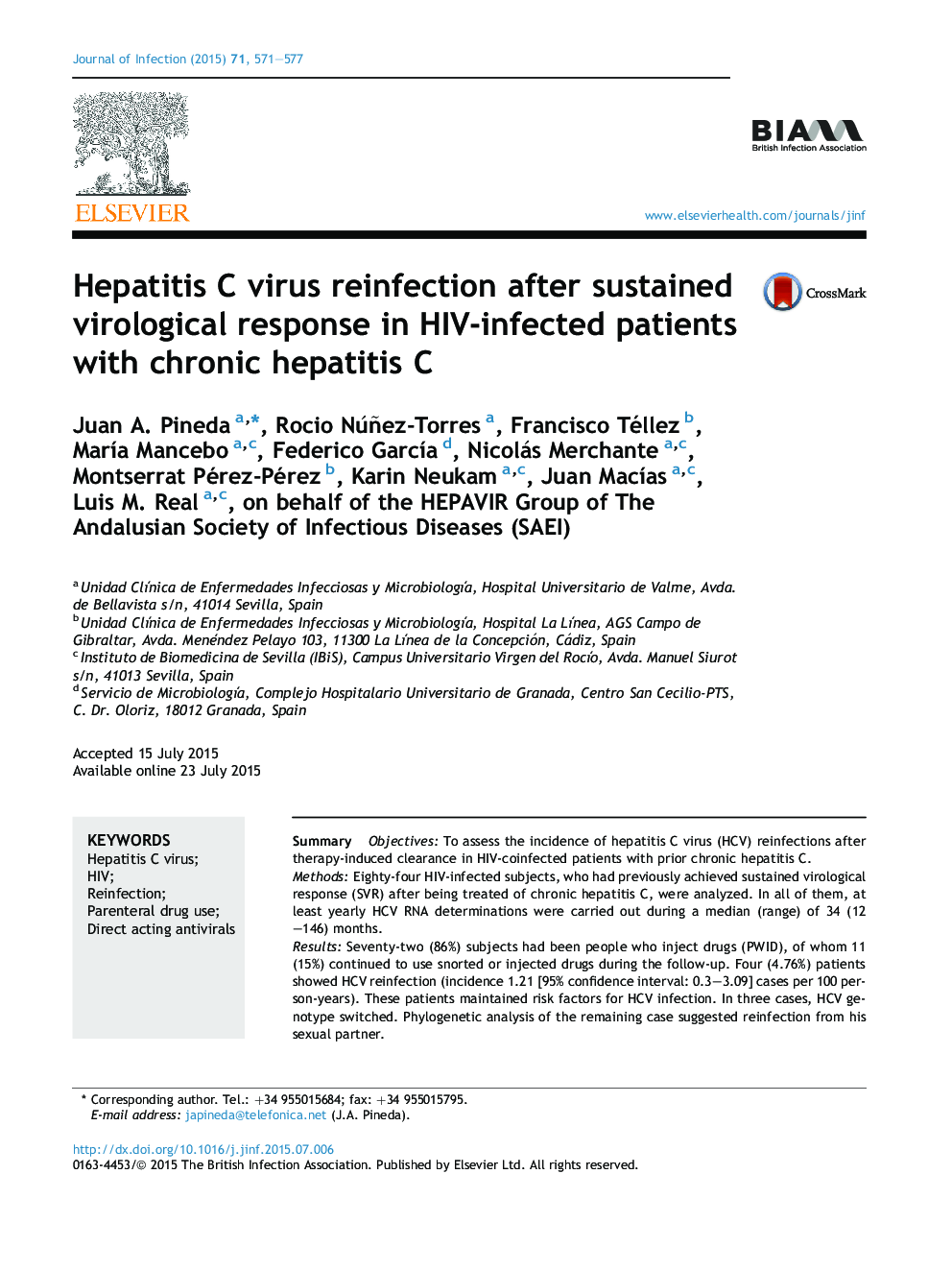| Article ID | Journal | Published Year | Pages | File Type |
|---|---|---|---|---|
| 6123080 | Journal of Infection | 2015 | 7 Pages |
â¢HCV reinfection is rare in HIV-infected patients after treating chronic hepatitis.â¢In PWID, cases are restricted to subjects with ongoing parenteral drug use.â¢The risk of reinfection should not be a limitation to DAA use in former PWID.
SummaryObjectivesTo assess the incidence of hepatitis C virus (HCV) reinfections after therapy-induced clearance in HIV-coinfected patients with prior chronic hepatitis C.MethodsEighty-four HIV-infected subjects, who had previously achieved sustained virological response (SVR) after being treated of chronic hepatitis C, were analyzed. In all of them, at least yearly HCV RNA determinations were carried out during a median (range) of 34 (12-146) months.ResultsSeventy-two (86%) subjects had been people who inject drugs (PWID), of whom 11 (15%) continued to use snorted or injected drugs during the follow-up. Four (4.76%) patients showed HCV reinfection (incidence 1.21 [95% confidence interval: 0.3-3.09] cases per 100 person-years). These patients maintained risk factors for HCV infection. In three cases, HCV genotype switched. Phylogenetic analysis of the remaining case suggested reinfection from his sexual partner.ConclusionThe incidence of HCV reinfection in the overall population of HIV-coinfected patients who achieved SVR after being treated against chronic hepatitis C is low. A low frequency of risk behavior is the main factor accounting for this modest rate of reinfection. The possibility of reinfection should not be considered a reason against treatment of HCV infection with direct acting antivirals in PWID.
